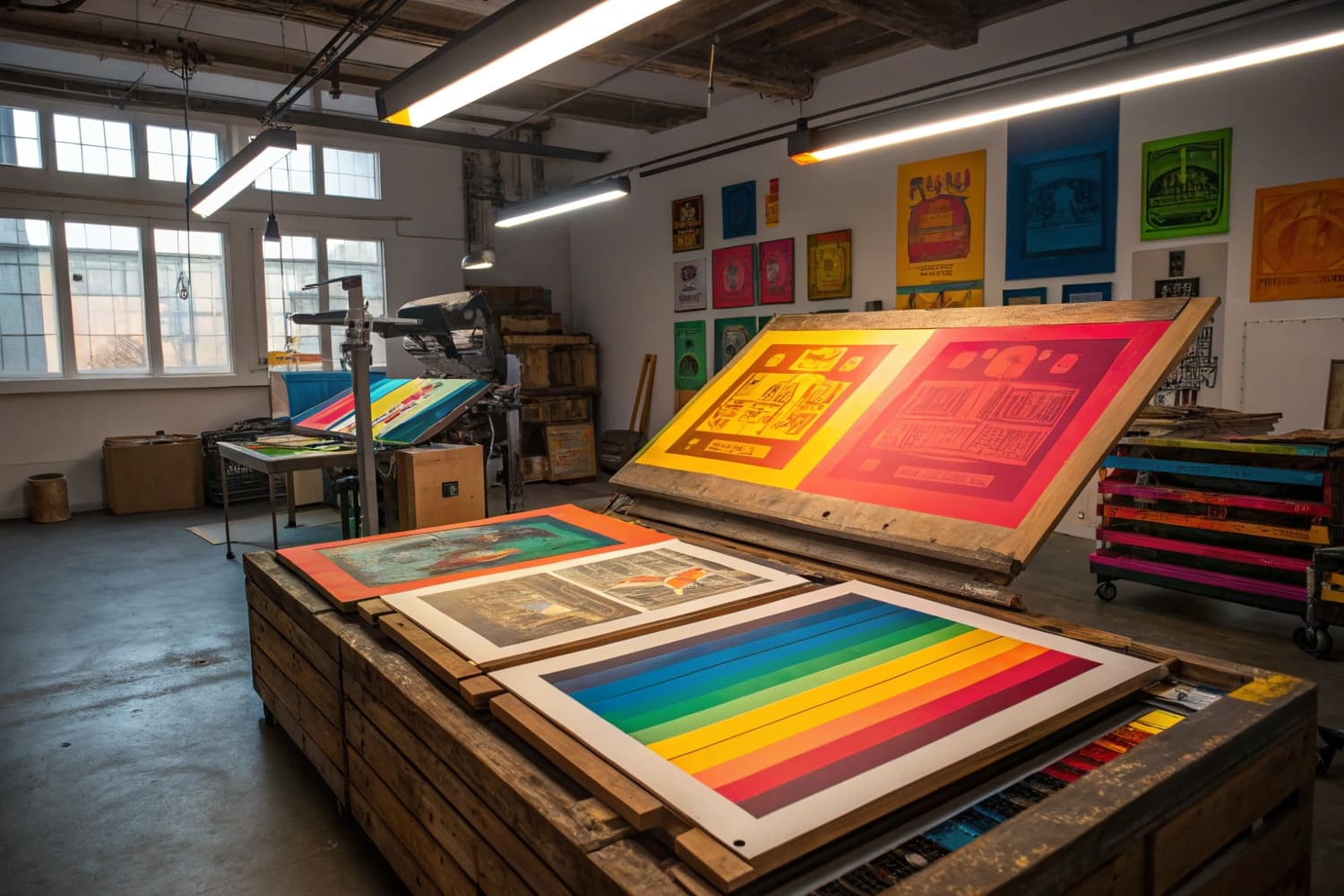I know the rush of a product launch. Weak print ruins the whole show. Problems grow fast. A clear map of printing options saves budgets and pride.
Four mainstream printing families—relief, intaglio, planographic, and stencil—cover almost every floor-display need, each with its own cost, speed, and color depth sweet spot.
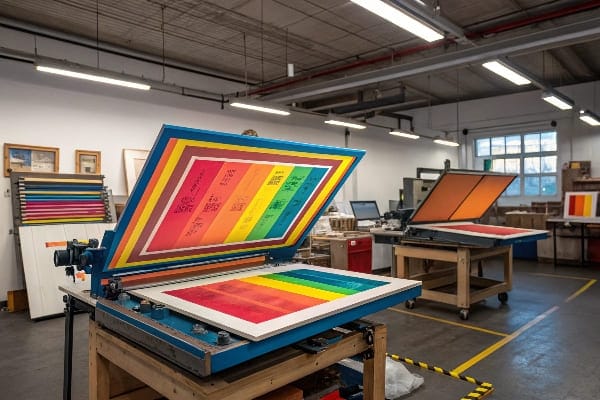
A quick taste is not enough. Keep reading and pick the right press before deadlines bite.
What are the different methods of printing?
Customers want art that pops. Confusion over method choices slows projects. A short list unlocks speed.
The core methods are relief, intaglio, lithographic (planographic), screen (stencil), digital inkjet, and flexography; each deposits ink in a different way.
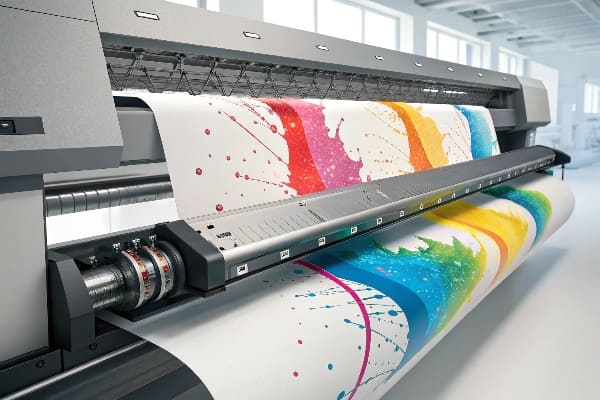
Method Snapshot
| Method | How Ink Transfers | Typical Substrate | Best For |
|---|---|---|---|
| Relief1 | Raised image | Corrugated board | Bold lines, small runs |
| Intaglio2 | Engraved recesses | Plastic film | Rich tones, long runs |
| Lithography | Flat plate | Paperboard | High detail, mid runs |
| Screen | Mesh stencil | Any flat surface | Heavy ink, spot colors |
| Digital3 | Droplets | Coated board | Variable data, prototypes |
| Flexo | Flexible plate | Corrugate | High speed, packaging |
Why This Matters
Relief and intaglio look similar to buyers, yet press setup, ink demand, and plate wear differ. I once swapped relief for flexo on a rush job and saved two days because flexo plates mounted faster on my third line. Litho stays king for photo detail, but screen wins for neon spot inks. Digital skips plates, which lets me print one-off samples overnight. Knowing these levers means fewer late-night redesigns when an overseas buyer suddenly changes artwork.
How many printing methods are there?
People throw out random numbers. That stalls meetings. A hard figure guides planning.
Most textbooks group printing into four historical families: relief, intaglio, planographic, and stencil.
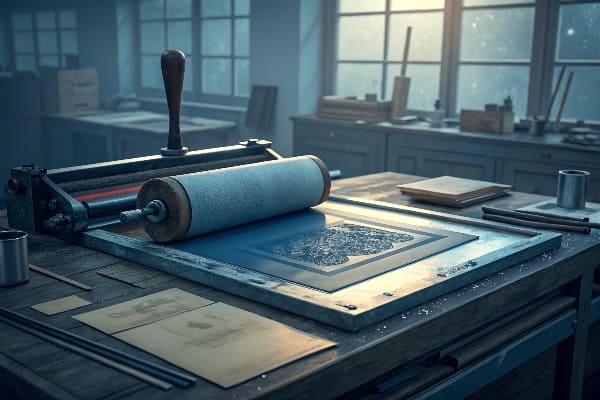
Counting the Families
| Family | Typical Techniques | Key Trait |
|---|---|---|
| Relief | Woodcut, Flexo | Raised image holds ink |
| Intaglio | Gravure, Mezzotint | Ink in recessed lines |
| Planographic4 | Lithography, Offset | Flat plate relies on chemistry |
| Stencil | Screen, Serigraphy | Ink forced through openings |
Where Extra Numbers Come From
Writers sometimes split digital off as a fifth family or list hybrid tech like UV inkjet. I lean on the four-family model when I train new operators because it shows ink physics, not brand hype. Extra labels—like “thermal” or “3D”—are sub-sets. Stick to four for quick clarity, break them down later for specs.
What is the printing method where a material’s surface is carved so an image can be printed from it?
I often watch designers trace a lino block and wonder why the lines print white. Carving raises that question.
Relief printing—woodcut, linocut, or letterpress—prints from raised areas left after carving away the non-image surface.

Carve, Ink, Press
| Step | Action | Risk |
|---|---|---|
| Cut | Remove non-image areas | Tool slips ruin detail |
| Ink | Roller coats raised parts | Too much ink floods gaps |
| Apply pressure to transfer | Uneven pressure ghosts lines |
When I Use Relief
Relief shines on thick corrugate floor displays because high spots press deep, giving a tactile bite. For a hunting-gear launch, I carved bold antler shapes into photopolymer plates5. The raised lines popped under warehouse lights and our U.S. buyer signed a reorder in two weeks. Relief limits fine gradations, so I avoid it for small QR codes. Still, plate cost is low and setup time short, making relief a lifesaver for aggressive trade-show schedules6.
What is a printing method in which rough surfaces are used called?
Some prints glow with velvet blacks. The trick hides in a rough metal plate.
Mezzotint, an intaglio technique, relies on a uniformly roughened plate that holds ink to create deep tones.
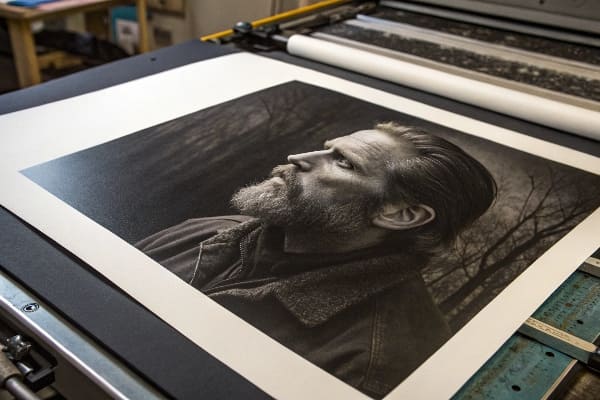
Roughness Equals Richness
| Feature | Detail |
|---|---|
| Tool | Rocker with fine teeth |
| Surface | Thousands of pits |
| Tone Control | Burnish smooth areas for light |
| Typical Use | Limited-edition art prints |
Floor-Display Relevance
Mezzotint rarely runs on corrugate cartons, yet its principle—rough micro-texture7 grabbing more ink—inspired our matte-varnish process8. By micro-sanding a flexo plate, I boosted black density9 on a bow-display header without adding ink hits. The finish mimicked deluxe prints and impressed a chain buyer. Rough surfaces also show in certain UV inkjet primers that grip ink on polymer board. Understand texture, and you unlock richer blacks without extra cost.
What is the most common printing method?
Buyers ask this because they equate popularity with safety. I answer in one line.
Offset lithography is the world’s most common commercial printing method.
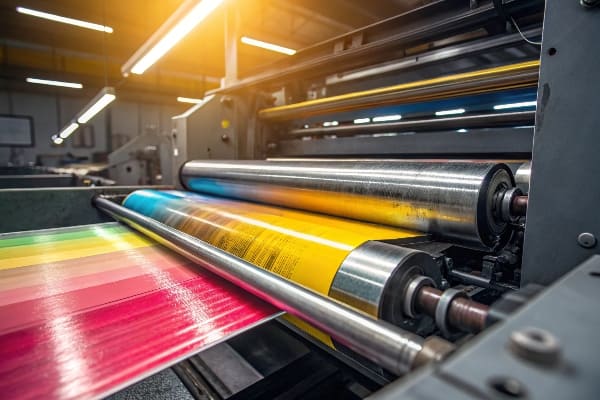
Why Offset Wins
| Strength | Impact on Floor Displays |
|---|---|
| Consistent quality10 | Uniform brand colors |
| High speed | Handles mass promotions |
| Plate longevity11 | Stable unit cost |
| Wide substrate range12 | From thin board to coated paper |
My Offset Story
In peak season I run three offset presses non-stop. One U.K. retailer needed 50,000 pallet skirts in ten days. Offset’s blanket cylinder kept ink even from first to last sheet, meeting the color chips the client mailed. Digital could not match speed. Screen could not hit fine logo gradients. Offset plates cost more upfront, but unit cost dropped below two cents by the fourth day. If you chase volume, offset is the old but steady truck that never breaks.
How many types of printing technology are there?
Tech jargon changes yearly. A clean answer stops wasting meeting minutes.
Seven key technologies dominate modern print: offset lithography, flexography, gravure, screen, digital inkjet, electrophotography, and 3D printing.
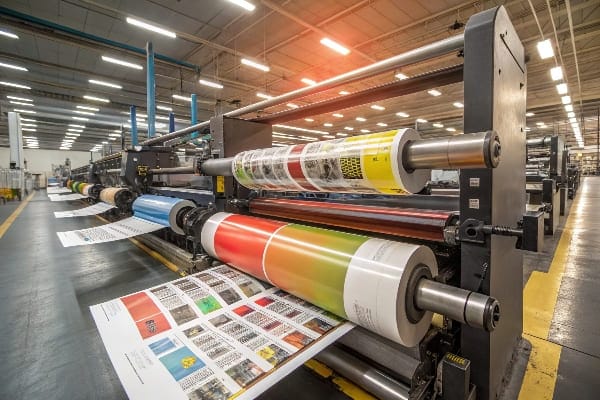
Technology Map
| Type | Core Principle | Typical Run Size |
|---|---|---|
| Offset Litho13 | Image transfers via blanket | Medium-large |
| Flexography | Flexible relief plate | Large |
| Gravure | Engraved cylinder | Very large |
| Screen | Ink through mesh | Small-medium |
| Digital Inkjet14 | No plate, droplets | Prototype-small |
| Electrophotography | Toner plus heat | Variable data |
| 3D Printing15 | Layered material build | Custom parts |
Bridging Old and New
I group ink-on-substrate processes as “2D” and additive-layer as “3D”. Offset and flexo anchor my factory because retailers crave consistent folding cartons. For limited regional launches, I lean on digital inkjet. When a Canadian buyer requested textured logo badges, I printed them on a resin 3D printer, sprayed chrome, and glued to the display. Mixing these seven lets me meet strict budgets without sacrificing creative flair.
Conclusion
Choose printing like you choose arrows for a hunt—match the tool to the target, and every floor display hits its mark.
Explore the benefits of Relief printing to understand its efficiency and suitability for various projects. ↩
Learn about Intaglio printing’s unique qualities and its advantages over other printing techniques. ↩
Discover how Digital printing can streamline your prototyping process and enhance flexibility in design. ↩
Learn about Planographic printing and its chemical processes, which are essential for grasping modern printing techniques. ↩
Learn about the advantages of photopolymer plates in printing, including their cost-effectiveness and versatility for various designs. ↩
Discover strategies to streamline your trade-show preparations and ensure your printing needs are met efficiently. ↩
Exploring this resource will deepen your understanding of how texture enhances print quality and ink adhesion. ↩
Learn about the matte-varnish process to see how it can improve your print projects and save costs. ↩
Discover techniques to enhance black density in your prints, ensuring vibrant and rich colors. ↩
Understanding consistent quality can help you appreciate how it enhances brand identity and customer satisfaction. ↩
Exploring plate longevity will reveal how it contributes to cost efficiency and sustainability in printing processes. ↩
Learning about substrate range can inform you about the versatility and applications of different printing materials. ↩
Explore the benefits of Offset Litho printing to understand why it’s a preferred choice for medium-large print runs. ↩
Learn about Digital Inkjet printing technology and its applications for prototypes and small runs. ↩
Discover the diverse applications of 3D Printing in manufacturing, especially for custom parts and innovative designs. ↩

